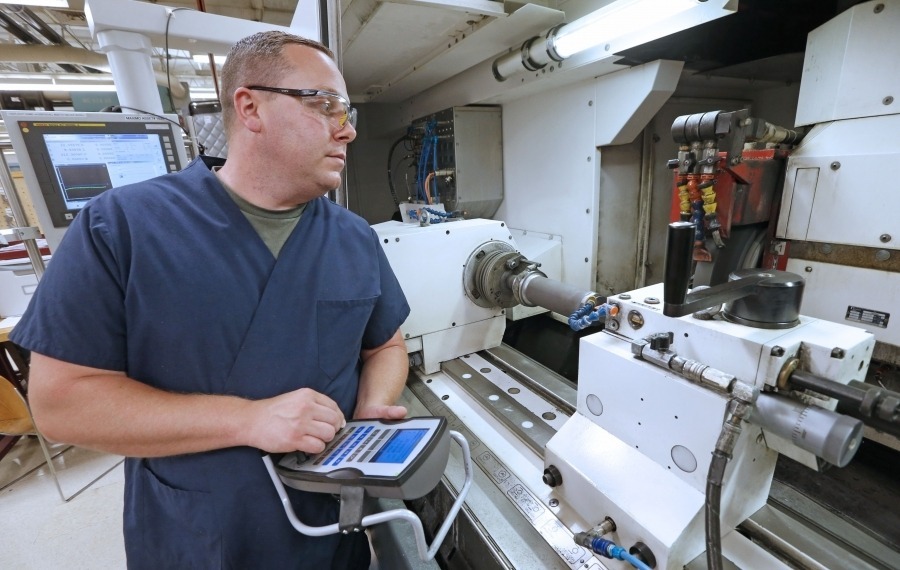Moog Inc. Blends 3-D Printing and Blockchain to Provide Aircraft Parts
Aircraft-component maker Moog Inc., an Aircraft-component maker, is experimenting with a blend of blockchain and 3-D printing to pace up the replacement of defective aircraft parts to a few hours from several days.
The aircraft-parts market is massively regulated, with sales requiring certification from the ‘Federal Aviation Administration’ and other agencies.
The East Aurora, N.Y., company intends to illustrate that putting together the two emerging technologies: the distributed ledger behind cryptocurrencies and also the building of parts on-demand from digital blueprints could promote a new type of digital marketplace for airplane parts.
“The plan is that I’m going to stock those parts digitally and transform them into physical goods when I require them,” said George Small, Moog’s CTO. “It is, after all, just trying to recognize what all the incapability is in the current supply chains and then provide opportunities for improvement,” he added.
Using blockchain reduces paperwork, allowing a buyer to locate a part and purchase it immediately.
“I need something that substitutes the paper trail, but in a way that supports this digital model and being able to print parts on-demand,” Mr. Small said.
Moog has about 13,000 employees and revenue of $2.9 billion in the year ended in September. It tested the combination of blockchain and 3-D printing first this year, enabling an airline to place an order of a part for a plane while it was in the air and have the part installed once it landed.
In the test, ‘Air New Zealand Ltd.’ used Moog’s blockchain system, ‘VeriPart,’ to obtain a substituted protective part for an in-seat screen for a ‘Boeing 777-300’ as it was en route from Auckland to Los Angeles. Using the blockchain method, a maintenance team in New Zealand ordered a digital file comprising the part design from ‘Singapore Technologies Engineering Ltd.’
The order was confirmed on Moog’s blockchain system, received on Microsoft Corp.’s Azure cloud. The part was printed on a Moog 3-D printer in Los Angeles, shipped to the airport, and installed in the plane.
Companies over industries have examined blockchain’s potential to verify transactions and streamline processes across large networks linking various partners.
Michael Shanler, vice president and analyst at Gartner Inc., said businesses are adopting 3-D printing to make airline parts, but correlating the technology to the blockchain is a comparatively new concept.
Within the airline-parts market, blockchain could not only administer a digital ledger of transactions and trusted manufacturers but also host information on the material used for aircraft parts, such as specific plastics or metals, so that the order could be redirected to a compatible 3-D printer.
Honeywell International Inc. has introduced a blockchain-based online marketplace that lets international patrons and sellers trade used aerospace components in real-time. General Electric Co. is using Microsoft’s Azure blockchain technologies to render updated data on parts.
But there are hurdles in building decentralized digital marketplaces for aircraft parts.
“Moving to some uncomplicated international structure—there’s a lot of independent systems and regulators that have to come on board,” Mr. Engel said.
Mr. Small said that for now, Moog is traversing the combination of 3-D printing and blockchain. An industrywide model could evolve, he added.
Stay informed with daily updates from Blockchain Magazine on Google News. Click here to follow us and mark as favorite: [Blockchain Magazine on Google News].
Get Blockchain Insights In Inbox
Stay ahead of the curve with expert analysis and market updates.
latest from tech
Disclaimer: Any post shared by a third-party agency are sponsored and Blockchain Magazine has no views on any such posts. The views and opinions expressed in this post are those of the clients and do not necessarily reflect the official policy or position of Blockchain Magazine. The information provided in this post is for informational purposes only and should not be considered as financial, investment, or professional advice. Blockchain Magazine does not endorse or promote any specific products, services, or companies mentioned in this posts. Readers are encouraged to conduct their own research and consult with a qualified professional before making any financial decisions.

 Bitcoin
Bitcoin  Ethereum
Ethereum  Tether
Tether  XRP
XRP  Solana
Solana  Dogecoin
Dogecoin  USDC
USDC  Lido Staked Ether
Lido Staked Ether  Cardano
Cardano  TRON
TRON  Avalanche
Avalanche  Chainlink
Chainlink  Toncoin
Toncoin  Wrapped stETH
Wrapped stETH  Shiba Inu
Shiba Inu  Sui
Sui  Wrapped Bitcoin
Wrapped Bitcoin  Hedera
Hedera  Stellar
Stellar  Polkadot
Polkadot  WETH
WETH  Hyperliquid
Hyperliquid  Bitcoin Cash
Bitcoin Cash  LEO Token
LEO Token  Uniswap
Uniswap  Litecoin
Litecoin  Pepe
Pepe  Wrapped eETH
Wrapped eETH  NEAR Protocol
NEAR Protocol  Ethena USDe
Ethena USDe  Aave
Aave  USDS
USDS  Internet Computer
Internet Computer  Aptos
Aptos  POL (ex-MATIC)
POL (ex-MATIC)  Cronos
Cronos  Mantle
Mantle  Ethereum Classic
Ethereum Classic  Render
Render  Bittensor
Bittensor  WhiteBIT Coin
WhiteBIT Coin  Monero
Monero  MANTRA
MANTRA  Artificial Superintelligence Alliance
Artificial Superintelligence Alliance  Dai
Dai  Arbitrum
Arbitrum  Filecoin
Filecoin 



